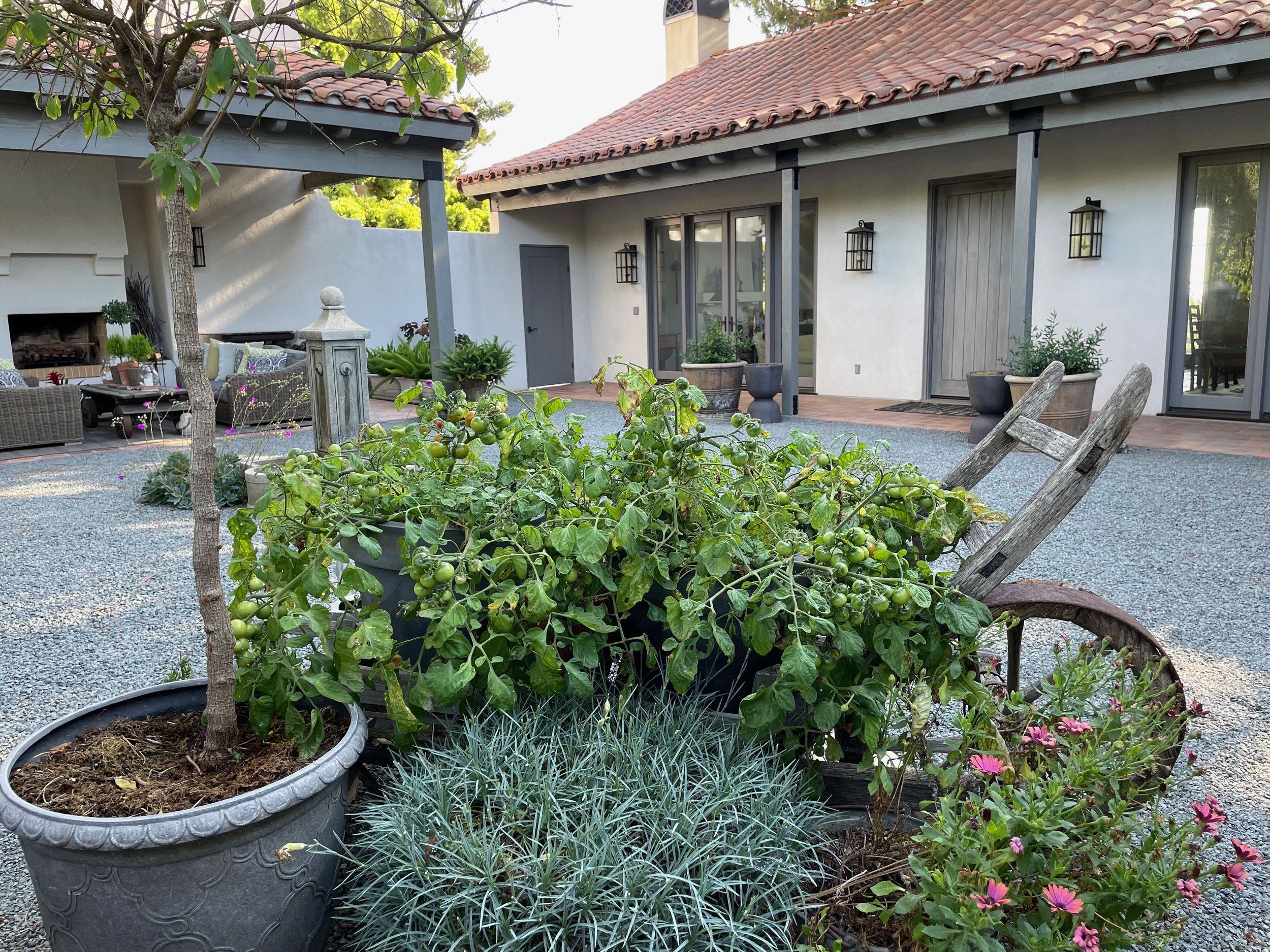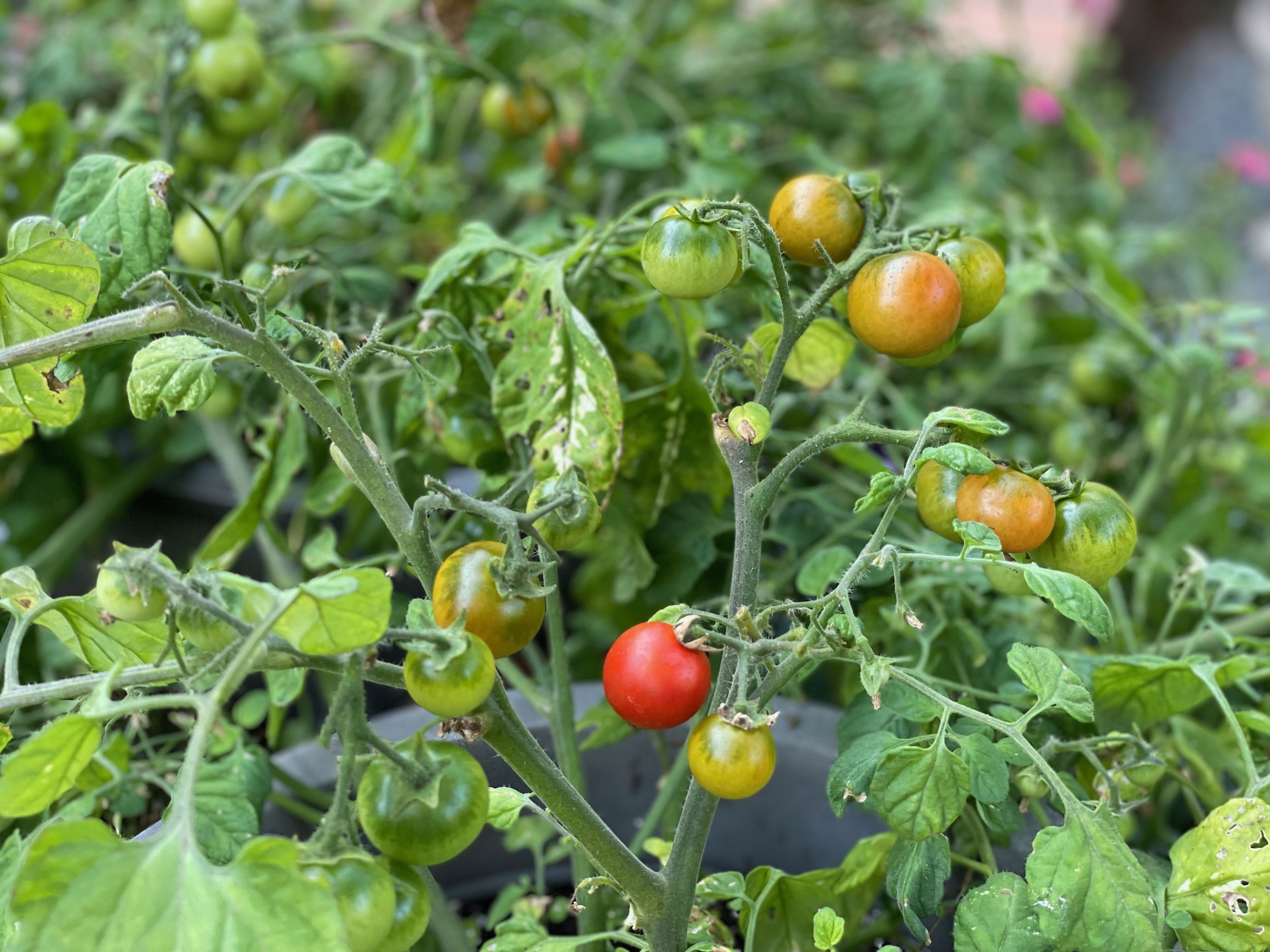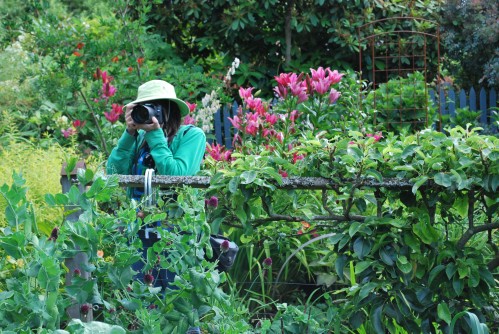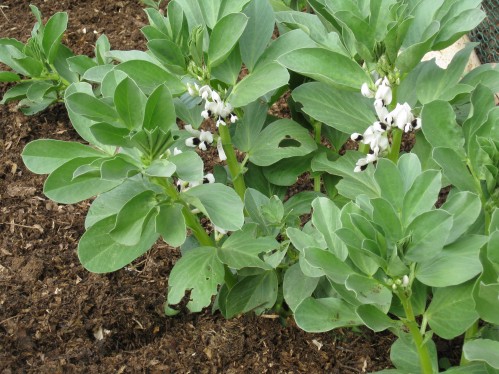Cheers for Cherry Falls Cherry Tomato is a tongue twister for sure. I have been so happy with this cherry tomato plant, I wanted to share it with you once again. If you recall back in February, I wrote about growing tomatoes from seed, Thyme To Think Tomatoes, and I was concentrating on tomatoes ideal for containers.
I don’t normally think of tomato plants as being charming, but this one is. Beauty and function intertwined is a winning combination, one of the principles of “French Country Living” I like to live by.
The description from John Scheepers Kitchen Garden Seeds catalog is what caught my eye initially. It is a compact, cascading determinate tomato plant (sets all its fruit at one time) that will grow only 6” high, but can cascade nearly 3’ over the side. It produces an abundance of 1-1/2” sweet red cherry tomatoes. I have these cherry tomato plants potted and elevated in my cart, and it looks so nice. You could also plant this particular cherry tomato plant in a hanging basket. Remember to fertilize regularly and water frequently as pots and baskets can dry out quickly.
This is a great example of growing different tomatoes and other vegetables from the fabulous seed catalogs that are available besides John Scheepers Kitchen Garden Seeds like Baker Creek Heirloom Seed Company, Botanical Interests, Johnny’s Selected Seeds, Renee’s Garden Seeds, and Seed Savers Exchange. It is so much fun to explore and grow different varieties that you don’t normally see in retail garden centers and stores.
I am excited for the maturing and ripening of the other tomato plants I started from seed last February. For now, the Cherry Falls Cherry Tomato is the first to ripen. Cheers for the commencing of tomato season, and cheers for the Cherry Falls Cherry Tomato!
Please share what tomatoes you like to grow in your potager and pots.
Bon Appétit et Bon Weekend…Bonnie









 This is a new category first called "Garden Economizing", which will offer you wonderful economic and often ecological tips to save you money in your garden, yet enhancing your garden.
This is a new category first called "Garden Economizing", which will offer you wonderful economic and often ecological tips to save you money in your garden, yet enhancing your garden.